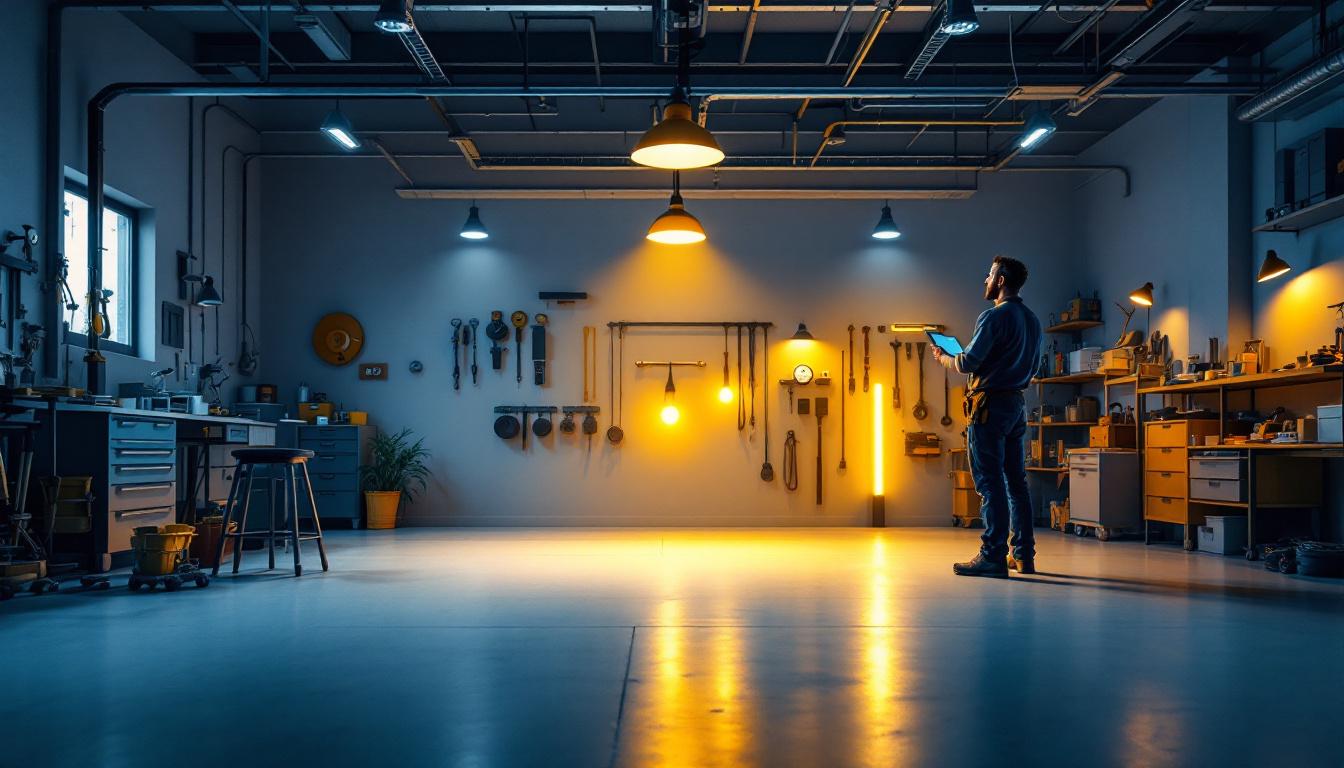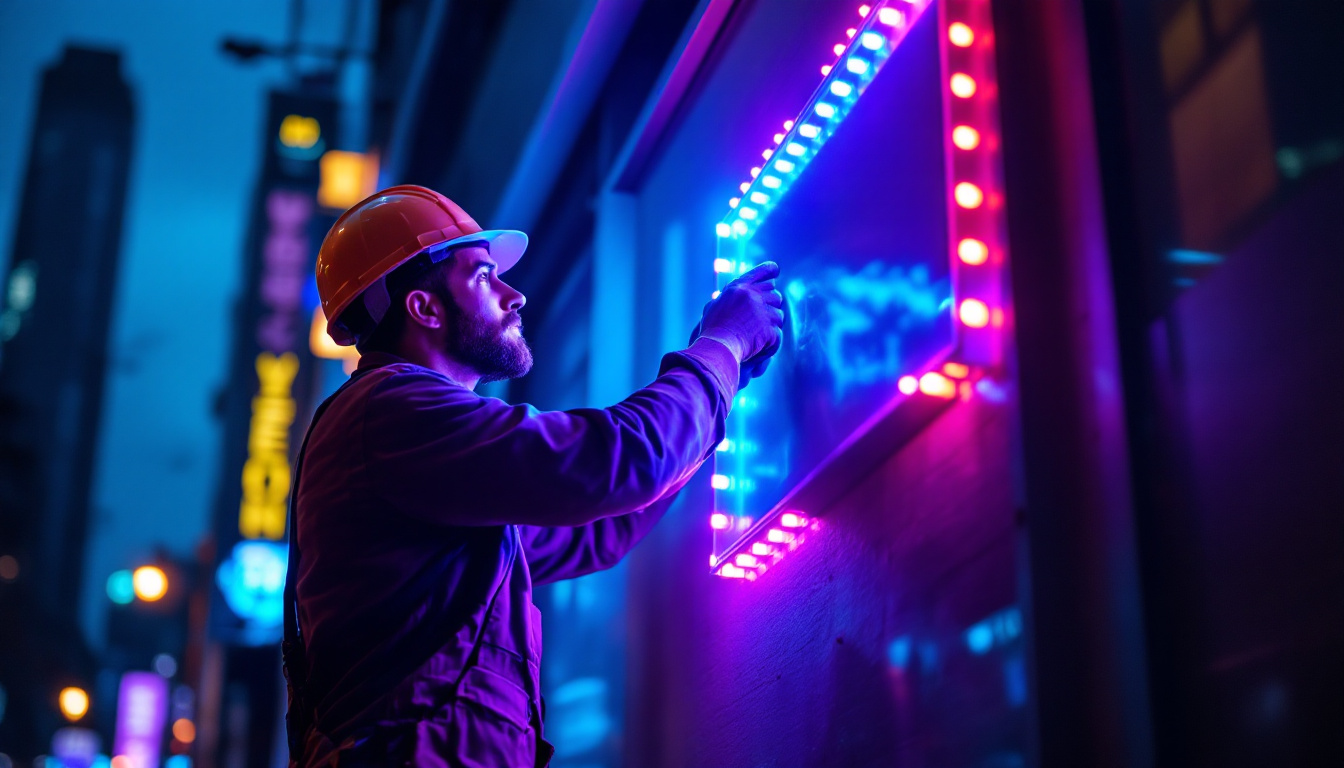
As a lighting contractor, understanding the nuances of garage lighting is crucial for delivering quality results that meet both safety and aesthetic standards. Garages serve multiple purposes, from vehicle storage to workshops, and the lighting design must accommodate these diverse functions. However, there are common pitfalls that can compromise the effectiveness of garage lighting. This guide aims to highlight these mistakes and provide insights on how to avoid them.
Before diving into the specifics of lighting installation, it’s essential to grasp the unique requirements of garage spaces. Unlike living areas, garages often have different lighting needs due to their multifunctional nature. A well-thought-out lighting plan can enhance visibility, safety, and usability. Proper lighting not only illuminates the space but also contributes to the overall functionality, making it easier to navigate and work within the garage environment.
Each garage is unique, with varying sizes, layouts, and uses. Assessing the space is the first step in ensuring that the lighting meets the specific needs of the client. Consider factors such as ceiling height, wall color, and the presence of windows. A garage with high ceilings may require different lighting solutions than one with standard heights. Furthermore, the color of the walls can affect how light is reflected within the space; lighter colors tend to bounce light around, enhancing brightness, while darker colors may absorb light, necessitating more powerful fixtures.
Additionally, evaluate the activities that will take place in the garage. Will it primarily be used for parking vehicles, or will it double as a workshop? Understanding these elements will guide the selection of appropriate fixtures and their placement. For instance, a garage that serves as a workspace may benefit from task lighting, such as adjustable LED spotlights, to provide focused illumination on work surfaces. Conversely, if the garage is mainly for vehicle storage, general ambient lighting may suffice to ensure safe navigation.
The choice of fixtures can significantly impact the overall effectiveness of garage lighting. Common options include fluorescent lights, LED fixtures, and incandescent bulbs. Each type has its pros and cons, and the selection should align with the garage’s intended use. Fluorescent lights are often favored for their bright, even illumination and energy efficiency, making them suitable for larger garages where visibility is crucial.
LED lights, for instance, are energy-efficient and have a long lifespan, making them an excellent choice for garages. However, they may not provide the warm light that some clients prefer. On the other hand, incandescent bulbs offer a warm glow but consume more energy and have a shorter lifespan. Balancing these factors is key to making an informed decision. Additionally, consider incorporating dimmable options or smart lighting systems that allow for adjustments based on the time of day or specific tasks being performed. This flexibility can enhance both comfort and efficiency, making the garage a more pleasant space to work in or simply navigate through.
Even seasoned lighting contractors can fall prey to common mistakes when designing garage lighting. Awareness of these pitfalls can help ensure that the final installation meets both functional and aesthetic standards.
One of the most critical aspects of garage lighting is brightness. Insufficient lighting can lead to accidents and make it difficult to perform tasks. Many contractors underestimate the amount of light needed, especially in larger garages or those used for detailed work.
To avoid this mistake, calculate the required lumens based on the garage’s square footage and its intended use. For example, a garage primarily used for parking may require around 50 lumens per square foot, while a workshop may need upwards of 100 lumens per square foot. Ensuring adequate brightness will enhance safety and functionality. Furthermore, consider the color temperature of the lighting; warmer tones can create a welcoming atmosphere, while cooler tones may be better for precision tasks, allowing for a clearer view of colors and details.
Placement of lighting fixtures is just as important as the type of fixtures chosen. Poorly placed lights can create shadows and dark spots, making the garage less functional. It’s essential to plan the layout carefully, considering the areas where tasks will be performed.
For instance, overhead lighting should be positioned to minimize shadows on work surfaces. Additionally, task lighting, such as under-cabinet lights or portable work lights, can be added to provide focused illumination where needed. Taking the time to plan the placement will yield a more effective lighting solution. Utilizing adjustable fixtures can also provide versatility, allowing users to direct light where it is most needed, whether it’s for a quick repair or a detailed project.
In today’s environmentally conscious world, energy efficiency is a crucial consideration. Many contractors may overlook this aspect, opting for traditional lighting solutions that consume more energy. This oversight can lead to higher utility costs for clients and a larger carbon footprint.
When selecting fixtures, prioritize energy-efficient options such as LED lights. Not only do they consume less energy, but they also have a longer lifespan, reducing the frequency of replacements. Educating clients about the benefits of energy-efficient lighting can also enhance their satisfaction with the final installation. Additionally, consider integrating smart lighting systems that allow users to control their garage lighting remotely, set schedules, or even adjust brightness levels based on the time of day, further enhancing energy savings and convenience.
While functionality is paramount, aesthetics should not be neglected. A well-designed lighting plan can enhance the overall look of the garage, making it a more inviting space. This is particularly important for garages that serve dual purposes, such as workshops or hobby areas.
Layered lighting involves combining different types of lighting to create a more dynamic and visually appealing environment. This can include ambient lighting for general illumination, task lighting for specific activities, and accent lighting to highlight certain features.
For example, using overhead LED fixtures for general lighting, supplemented by task lights over workbenches, can create a balanced lighting scheme. Additionally, using decorative fixtures can add a personal touch, making the garage feel less utilitarian.
Whenever possible, incorporate natural light into the garage design. Windows, skylights, or light tubes can significantly enhance the brightness of the space during the day. Natural light not only reduces the need for artificial lighting but also creates a more pleasant environment.
Consider the orientation of the garage and the placement of windows to maximize daylight exposure. However, it’s essential to balance natural light with artificial sources, especially during the evening or on cloudy days.
Safety is a paramount concern in any lighting installation, particularly in garages where tools, vehicles, and chemicals may be present. Ensuring that the lighting design adheres to safety standards is crucial for preventing accidents and injuries.
When selecting fixtures for garage lighting, it’s essential to choose those that are suitable for the environment. For instance, fixtures should be rated for damp or wet locations if the garage is prone to moisture. This will prevent electrical hazards and ensure the longevity of the fixtures.
Additionally, consider using shatter-resistant bulbs and fixtures, especially in areas where tools are frequently used. This will minimize the risk of injury in the event of a bulb breaking. Safety should always be a top priority in any lighting project.
Motion sensors can enhance both safety and energy efficiency in garage lighting. By automatically turning on lights when someone enters the space, these sensors eliminate the need to fumble for switches in the dark. This is particularly beneficial in larger garages where reaching the switch may be inconvenient.
Incorporating motion sensors can also help reduce energy consumption, as lights will only be on when needed. This feature adds an extra layer of convenience for clients, making their garage experience more enjoyable.
Designing effective garage lighting requires careful consideration of various factors, from assessing the space to choosing the right fixtures and ensuring safety. By avoiding common mistakes and implementing best practices, lighting contractors can deliver solutions that meet both functional and aesthetic needs.
The field of lighting design is continually evolving, with new technologies and trends emerging regularly. Staying informed about the latest developments can help contractors provide the best solutions for their clients.
Consider attending industry conferences, participating in workshops, or following relevant publications to keep abreast of innovations in lighting technology. This knowledge will not only enhance the quality of work but also position contractors as experts in the field.
Ultimately, successful lighting design is about more than just technical knowledge; it’s also about building strong relationships with clients. Taking the time to understand their needs and preferences can lead to more satisfied customers and repeat business.
Encourage open communication throughout the project, and be receptive to feedback. This collaborative approach will foster trust and ensure that the final lighting design aligns with the client’s vision.
In conclusion, garage lighting is a multifaceted challenge that requires a thoughtful approach. By avoiding common mistakes and focusing on safety, efficiency, and aesthetics, lighting contractors can create spaces that are not only functional but also enjoyable for their clients.
Ready to elevate your garage lighting projects with superior quality and unbeatable value? Look no further than LumenWholesale, where we provide lighting contractors with spec-grade lighting products at wholesale prices. Say goodbye to inflated markups and hello to a vast selection of reliable, high-performance lighting that meets the highest industry standards. Plus, with free shipping on bulk orders, you can stock up on premium lighting solutions without any hidden fees. Make your next project shine and enjoy the perfect blend of quality, affordability, and convenience. Visit LumenWholesale now for Wholesale Lighting at the Best Value.

Illuminate your projects with expert insights from seasoned lighting contractors.

Discover how lighting contractors can enhance their projects with recessed LED strip lighting.

Discover the top strategies lighting contractors use to maximize the impact of LED sign lights.

Discover innovative strategies for lighting contractors to thrive in the evolving industry landscape.